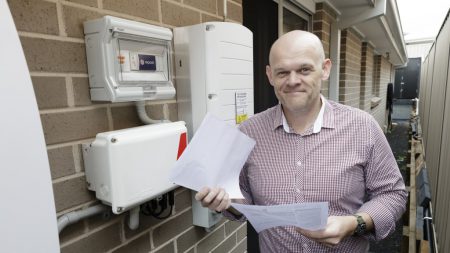Savings in excess of 90% have been reported by the first Australian to install a Tesla Powerwall after a year of living with the solar system. And with rapid advancements making home batteries more affordable, the number of installations are expected to triple in 2017.

Nick Pfitzner and his family live in a four bedroom home in Kellyville Ridge, NSW. It’s a large place with a study, an internal laundry, a pool and an outdoor entertainment area.
Powering the home with electricity in 2015 cost him $2289. But just over a year ago, he invested in a solar power system that has since significantly cut costs.
Nick, a self-confessed Tesla fanboy, was the first person in Australia to buy the company’s Powerwall. He bought a 7kW battery, a 5kWp solar array, a SolarEdge inverter and a Reposit monitoring system for $16,790 in January 2016.
A year on and Nick’s annual electricity bill has dropped to $178.71 – that’s a 92% saving of $2110.

The savings exceeded projections, as well as Nick’s own expectations.
“Before I crunched the numbers I was looking at what would be my return on investment. If it saved me 80% of my power bill, [I thought] it would be pretty good,”
he says.
“I really learned a lot about myself and how my house uses energy and how we can improve with solar now.”
Home batteries are an emerging technology. They gained a lot of attention when electric carmaker Tesla entered the market. Original projections estimated a payback time of more than a decade, anywhere from 14 to 18 years.
At this rate, Nick’s solar system will pay itself off within eight years.
His average quarterly bill dropped from $572 in 2015 to $45 in 2016.
One of his quarterly bills was in credit of $50. This is because his system can sell unused electricity back to the grid.
“The system will power whatever the house needs first as a priority, then it will fill the battery as a second priority and then anything over it’ll export,”
he tells CHOICE.
“The aim is to try and export about three times of what I import because my electricity cost is about three times [as much].”
Read more: Choice
